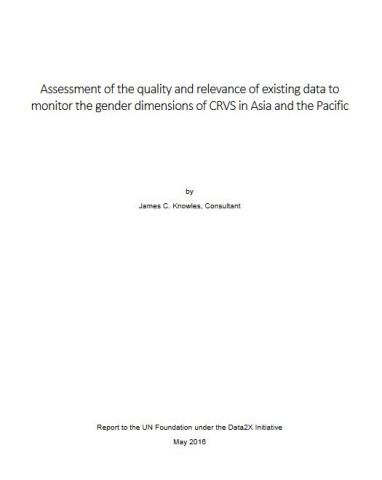The purpose of this report is to review the available data, both quantitative and qualitative, on the type and magnitude of gender-related under-registration of vital events and non-possession of adult identity documents in Asian and Pacific (AP) countries, and their possible consequences, and the availability and dissemination of sex-disaggregated vital statistics by country or groups of AP countries. In addition, the report analyzes recent sex-disaggregated quantitative data in selected AP countries with a view to making recommendations on how monitoring the selected targets in the Regional Action Framework (RAF) on CRVS in Asia and the Pacific can be more effective from a gender perspective. The report also includes analysis designed to support the setting of RAF national targets that reflect gender “inequalities related to CRVS experienced by subgroups of the population, including among hard-to-reach and marginalized populations and particular geographic areas and administrative subdivisions…” (UN ESCAP 2015). The report focuses mainly on birth registration due not only to the paucity of data on other aspects of CRVS but also due to the key role of birth registration as the gateway both to the registration of other vital events and to obtaining adult identity documents.
The report is organized into five sections, including this introductory section. Section two reviews the findings of existing quantitative and qualitative studies on (i) the gender dimensions of CRVS under-coverage of births, deaths (including causes of death), marriages, divorces, and non-possession of adult identity documents, and (ii) the availability and dissemination of gender-disaggregated vital statistics. Section three presents the main findings of the data analysis done for this report in six AP countries (i.e., Afghanistan, Bangladesh, Cambodia, Lao PDR, Nepal, Pakistan), including a description of the data sources used and their strengths and weaknesses, the criteria used for selecting countries and data sets, and the methodology used in the analysis. Section four discusses the implications of the report’s main findings for CRVS monitoring, including information that can be used to establish subnational targets for vulnerable population sub-groups. Section five presents the report’s conclusions and recommendations, including prospects for an evidence-based roadmap focused on gender issues in CRVS. In addition to the main text, eight stand-alone annexes provide detailed information on the individual country analyses of household survey data.


